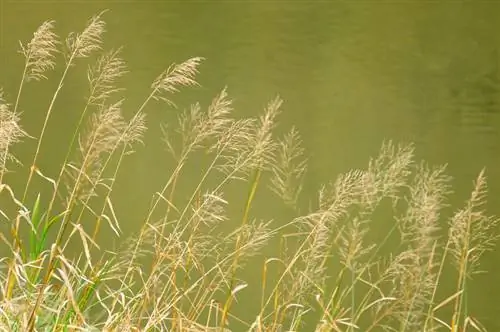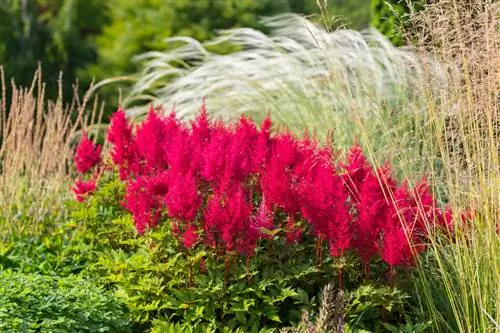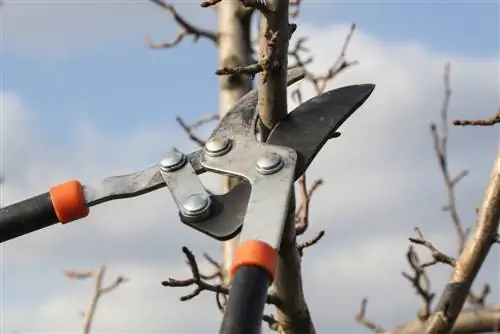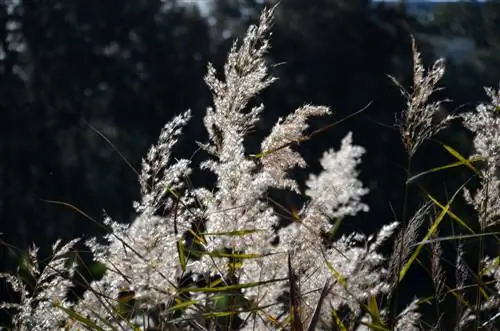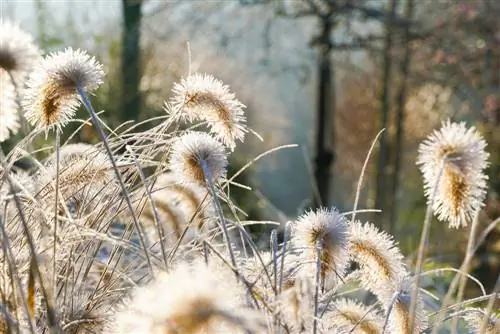- Author admin [email protected].
- Public 2023-12-16 16:46.
- Last modified 2025-01-23 11:20.
If you value the well-groomed appearance of the riding grass, cutting should be viewed as an important aspect of care and should not be neglected. What should be important and when is the right time for it?
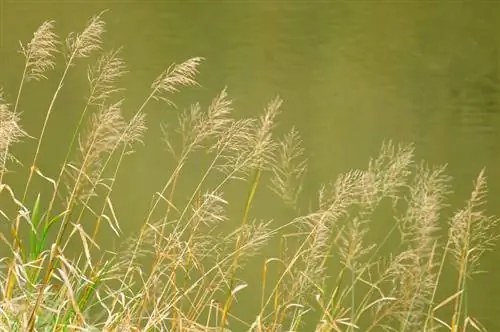
When and how should you cut riding grass?
Riding grass should be cut in spring, shortly before or when new growth occurs. Using clean pruning shears or a knife, gather the grass in clumps and cut it back to around 10 cm above the ground. Do not injure fresh shoot tips.
Don't cut too quickly
The top priority when cutting is the right time. This applies not only to riding grass, but to all ornamental grasses. Anyone who cuts back the riding grass in autumn is taking a big risk.
If the stalks remain standing over the winter, they act as protection against winter moisture. If they are cut off, water can penetrate the cut parts and run down to the roots. There is then a risk of rot.
Spring is the right time to cut
Only when spring has arrived should you pull out the scissors. An ideal time for cutting is shortly or when the plant is newly sprouting. It is important that there is no frost when you cut them back.
How to cut?
How it works:
- Cleaning secateurs or knives
- Gathering clumps of riding grass with one hand
- cut down to just above the ground (approx. 10 cm)
- dispose of cut plant parts in the compost or use as mulch
- alternatively: only remove the old inflorescences (other old plant parts rot over time)
When cutting, make sure that you do not injure the fresh shoot tips - if there are any. After pruning, you can dig up and divide the riding grass and its flowers, which can reach a height of up to 150 cm.
Use the flower spikes as decoration for the vase
If you own a riding grass, you can cut off its flower spikes or the long stalks with the flowers for decorative purposes, even in autumn. Even left on the plant, the yellow-brown flower spikes look beautiful and provide pretty accents in the dreary season, for example when they are covered in hoarfrost or snowflakes.
However, the other parts of the plant should be left standing. They are stable enough and can also withstand snow. If you want, you can tie them together with a rope to form a bun.
Tip
Similar to other ornamental grasses, riding grass also has sharp leaf edges. As a precaution, it is better to wear gardening gloves to avoid injuring yourself.

